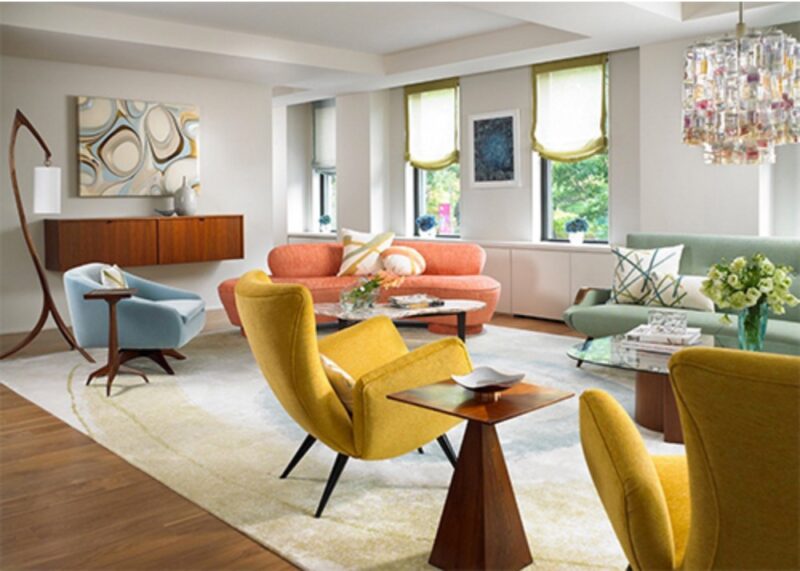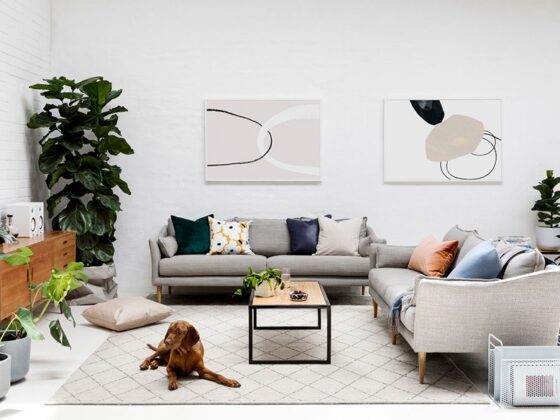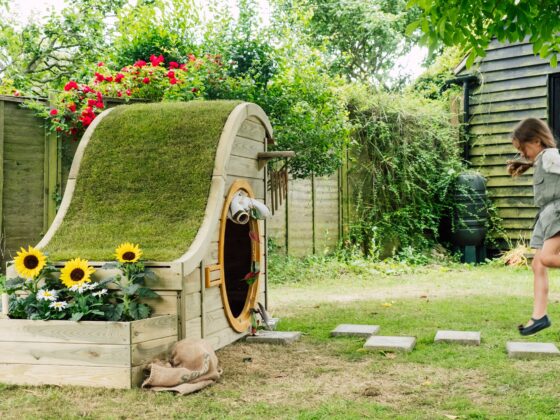Mid-century modern design continues to captivate contemporary homeowners with its timeless appeal, blending nostalgia with an enduring relevance that transcends mere trend cycles.
This design movement—spanning roughly from the 1940s through the 1960s—offers a distinctive aesthetic characterized by clean lines, organic forms, and a harmonious balance between functionality and beauty.
Integrating these classic pieces into today’s homes requires a thoughtful approach to create spaces that feel curated rather than replicated, contemporary rather than dated.
Understanding Mid-Century Modern Fundamentals
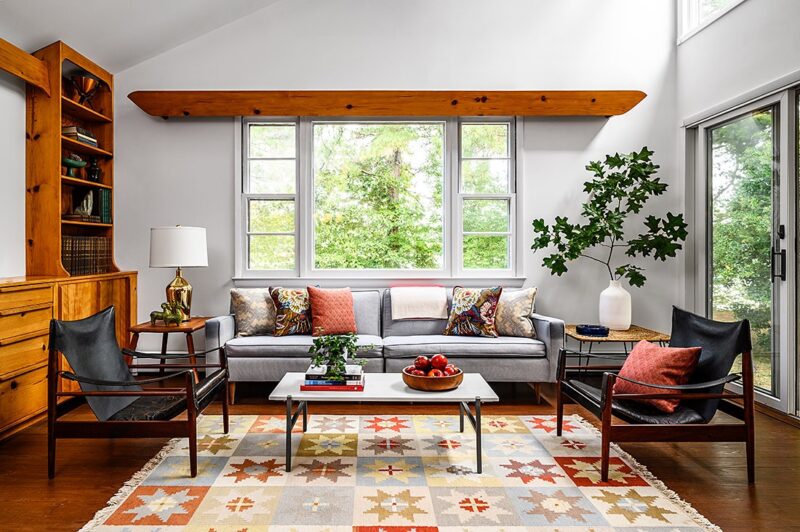
The mid-century modern movement emerged from a post-war America characterized by optimism, technological advancement, and cultural transformation.
Key designers like Charles and Ray Eames, Eero Saarinen, and Florence Knoll created furniture that embodied the era’s forward-looking spirit while maintaining accessibility and practicality. Their work featured:
- Clean, organic lines with minimal ornamentation
- Mixed materials combining wood, metal, glass, and innovative plastics
- Functionality prioritized alongside aesthetic considerations
- Bold colors contrasted with neutral foundations
- Forms inspired by nature and emerging technology
These core principles continue to resonate with contemporary sensibilities—particularly our current preference for spaces that balance comfort with intentional design, warmth with simplicity, and accessibility with sophistication.
The Contemporary Context: Why Mid-Century Modern Endures
Mid-century modern furniture has experienced a remarkable resurrection in contemporary design. According to the American Society of Interior Designers’ 2024 Residential Design Trends Report, mid-century modern elements appear in 68% of high-end residential projects—a higher percentage than any other distinct historical style. This persistent popularity stems from the style’s:
- Compatibility with open-concept contemporary floor plans
- Emphasis on functionality that aligns with modern minimalism
- Human-scaled proportions that counterbalance today’s technology-dominated spaces
- Warm wood tones that soften predominantly white contemporary interiors
- Craftsmanship quality that supports sustainability through longevity
In my experience working with clients across diverse aesthetic preferences, mid-century pieces often serve as effective “bridge” elements—connecting disparate styles through their balanced forms and versatile materiality. Even clients who don’t identify with mid-century design as a comprehensive style often respond positively to its individual elements.
Strategic Integration: Balance, Not Dominance
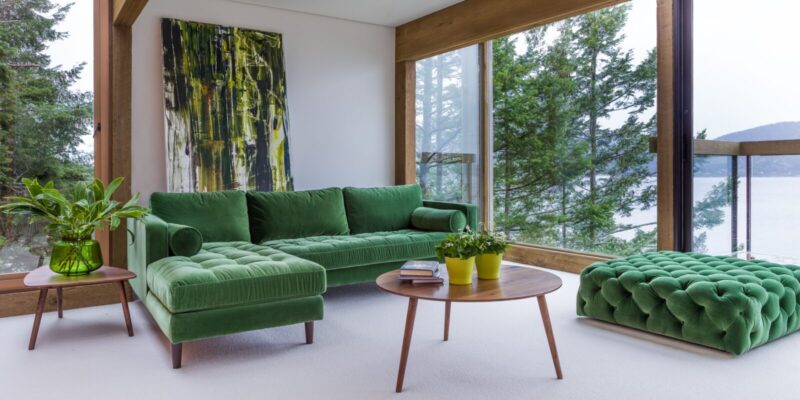
The most successful contemporary incorporations of mid-century furniture avoid creating time-capsule environments. Instead, they thoughtfully integrate signature pieces within larger, eclectic compositions. Effective strategies include:
The Statement Anchor Approach
Select one exceptional mid-century piece to serve as a room’s focal point, then build a complementary arrangement around it. This might be:
- An iconic lounge chair positioned in a conversational grouping
- A distinctive credenza anchoring a dining area
- A sculptural coffee table centered in a seating arrangement
- A statement lighting fixture establishing the room’s character
This concentrated approach prevents mid-century elements from overwhelming the space while still honoring their distinctive design language.
The Textural Contrast Method
Mid-century furniture’s organic forms and natural materials create compelling contrast with contemporary elements. Successful pairings often include:
- Walnut mid-century case goods against cool contemporary finishes
- Sculptural mid-century seating with streamlined current pieces
- Geometric mid-century patterns with today’s more fluid textiles
- Warm mid-century wood tones with sleek China quartz stone surfaces
The textural dialogue between these different design eras creates visual interest and prevents spaces from feeling one-dimensional.
The Color Story: Beyond Neutrals

While mid-century furniture is often associated with warm wood tones, the original movement embraced vibrant color. Contemporary interpretations can leverage this chromatic legacy through:
- Strategic accent pieces in signature mid-century hues like mustard, olive, and burnt orange
- Textiles that reference mid-century patterns without literal reproduction
- Color blocking that references the era’s graphic sensibility
- Contemporary neutral backgrounds that allow colorful mid-century elements to shine
Have you considered how color can serve as a temporal bridge, connecting historical pieces with contemporary spaces? The thoughtful color integration often determines whether mid-century elements feel harmoniously integrated or awkwardly displaced.
Scale and Proportion: The Human-Centered Advantage
Mid-century furniture’s human-scaled proportions offer a significant advantage in contemporary homes. Unlike the oversized pieces that dominated the early 2000s, mid-century designs typically feature:
- Raised profiles that create visual lightness
- Compact dimensions that function well in varied spaces
- Intentional heights that support natural human postures
- Thoughtful ergonomics that prioritize comfort without bulk
Case studies show that rooms incorporating these more modestly-scaled pieces often feel larger and more navigable than those filled with oversized contemporary alternatives—a particular advantage in urban environments where square footage comes at a premium.
Mixing Materials: Creating Visual Conversation
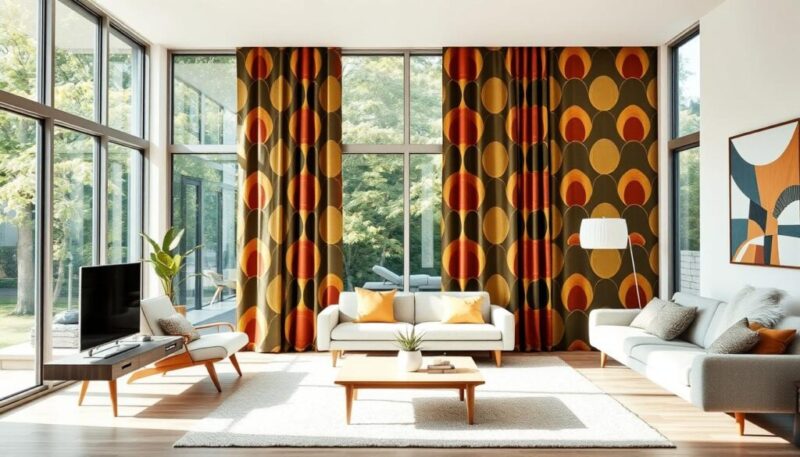
The material diversity of mid-century design offers rich opportunities for contemporary integration. Successful spaces often combine:
- Warm woods (particularly walnut, teak, and oak) with cool contemporary surfaces
- Organic textile patterns with current geometric designs
- Hand-crafted ceramic accessories with industrial contemporary elements
- Historical glass forms with modern metallic finishes
This material conversation creates sophisticated spaces that reference history without being constrained by it.
The Narrative Possibility: One Designer’s Transformation
The transformative potential of mid-century integration becomes evident through specific project narratives.
Consider the renovation of a 2010-era minimalist condominium documented in Dwell’s March 2024 feature on adaptive design. The space initially presented as sterile and impersonal—a sea of white surfaces and sharp angles lacking warmth or character.
The designer introduced select mid-century pieces that fundamentally altered the space’s emotional quality. A sculptural credenza in richly grained walnut brought warmth and organic texture.
Classic bent plywood dining chairs introduced subtle curves that softened the predominantly rectilinear architecture. The transformation wasn’t about recreating a historical aesthetic but using mid-century elements to address specific contemporary deficiencies.
The space maintained its essentially contemporary identity but gained warmth, texture, and historical resonance—a perfect example of how thoughtful integration creates spaces more nuanced than either style could achieve independently.
Architectural Dialogue: Creating Contextual Harmony
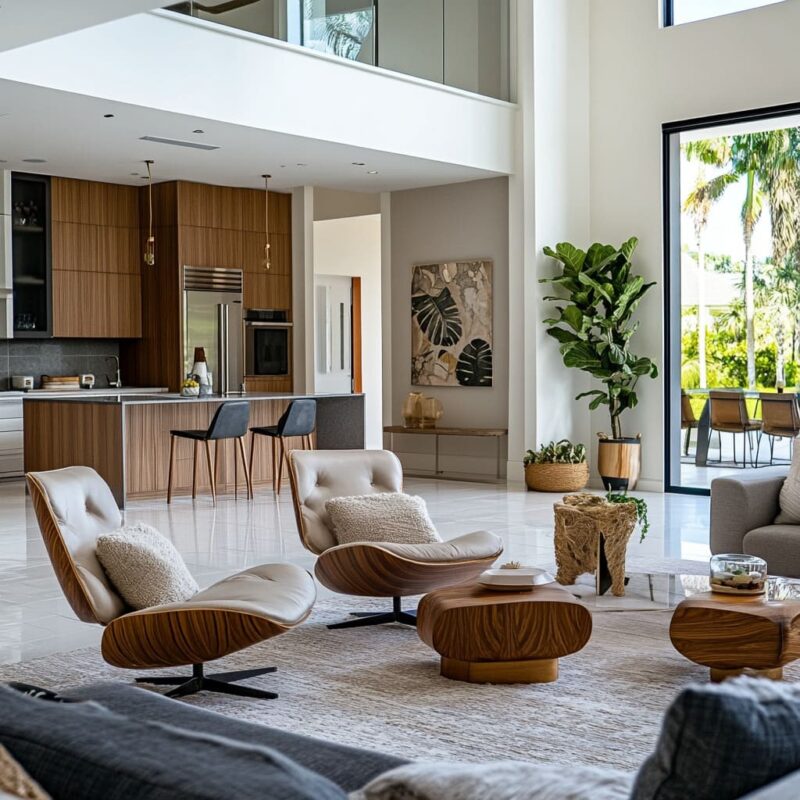
Mid-century furniture performs differently depending on the architectural context.
Contemporary homes with historical elements—like exposed beams or original hardwood—create natural partnerships with mid-century pieces. Ultra-modern environments with expansive glass and minimal detailing create more challenging integration scenarios.
OPPEIN doors, with their clean lines and minimalist detailing, often create ideal transitions between contemporary architectural elements and mid-century furnishings.
Their unobtrusive profiles avoid competing with distinctive mid-century pieces while maintaining contemporary functionality and performance.
Avoiding Common Pitfalls
Successful mid-century integration avoids several common missteps:
Over-Commitment: Rooms where every piece references the same era quickly become thematic rather than designed. Limit mid-century elements to 30-40% of major pieces for balanced composition.
Reproduction Reliance: While quality reproductions have their place, spaces featuring exclusively reproduced pieces often lack the soul and character of those incorporating authentic vintage items alongside contemporary elements.
Ignoring Comfort: Some iconic mid-century designs prioritized form over function.
Contemporary integrations should balance visual appeal with actual livability—supplementing aesthetically significant but less comfortable pieces with more forgiving contemporary seating.
Forced Historical Accuracy: The most successful spaces incorporate mid-century elements because they enhance the environment, not to achieve historical authenticity. Select pieces that solve specific design challenges rather than checking period-appropriate boxes.
Conclusion: Creating Timeless Rather Than Period Spaces
The enduring appeal of mid-century modern furniture lies not in its historical association but in its fundamental design excellence.
These pieces have transcended their original context to become design classics precisely because they speak to enduring human needs for comfort, beauty, and functionality.
The most successful contemporary integrations honor these qualities without becoming constrained by period accuracy.
They create spaces that feel thoughtfully curated rather than historically recreated—environments that acknowledge design history while remaining firmly rooted in present living needs.
This balanced approach creates homes that feel simultaneously fresh and established, contemporary and timeless—spaces that will likely maintain their appeal for decades to come, just as the mid-century pieces themselves have done.
